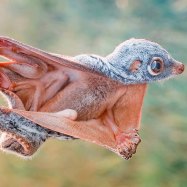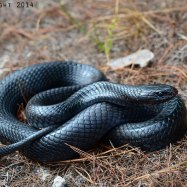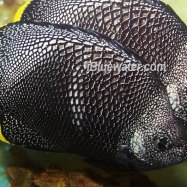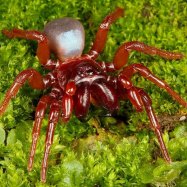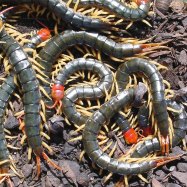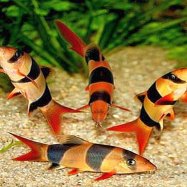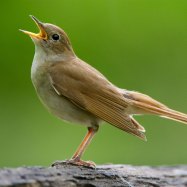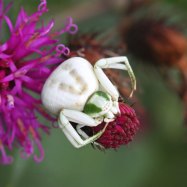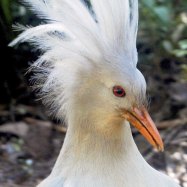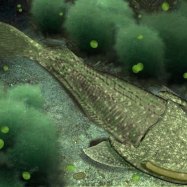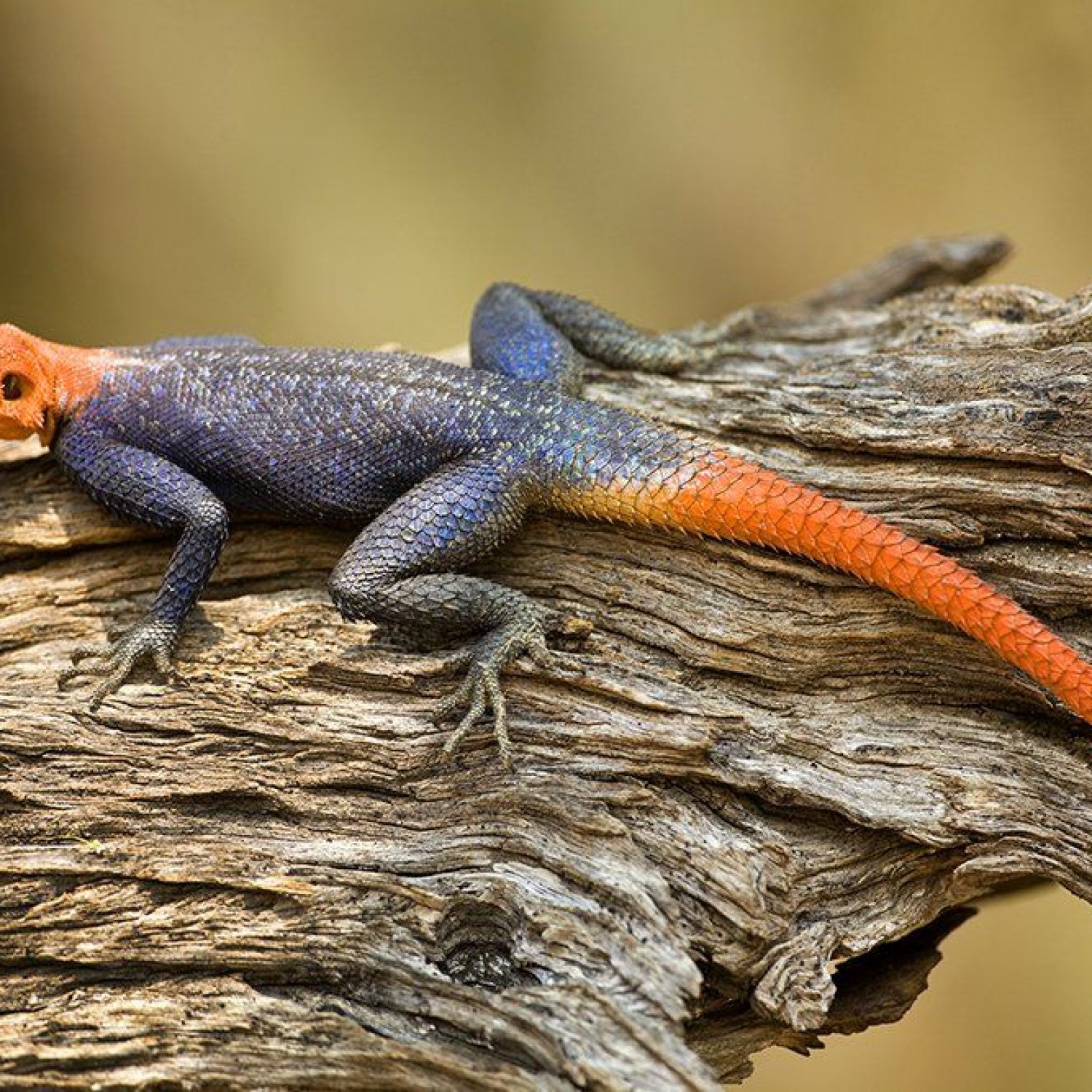
Agama Lizard
Up to 30 centimeters (12 inches)
The Agama lizard, found in Africa, belongs to the Agamidae family. It has a small to medium-sized, slender body and can grow up to 30 cm in length. With its long tail and vibrant colors, this lizard is a fascinating creature to observe in the wild. Its unique characteristics make it a favorite among reptile enthusiasts. #AgamaLizard #Africa #Reptiles
Animal Details Summary:
Common Name: Agama Lizard
Kingdom: Animalia
Habitat: Grasslands, savannas, forests, rocky areas
The Colorful and Fascinating Agama Lizard of Sub-Saharan Africa
The African continent is known for its diverse and vibrant wildlife, and the agama lizard is no exception. Found throughout Sub-Saharan Africa, this small but striking reptile is a sight to behold. Also known as the rainbow lizard or the rainbow agama, this colorful creature has captured the attention and curiosity of both locals and travelers alike.Origin and Habitat
The scientific name for the agama lizard is Agama agama Agama Lizard. It derives its name from the family it belongs to, Agamidae, which includes over 300 species of lizards found in Europe, Africa, Asia, and Australia. The agama lizard is endemic to Sub-Saharan Africa, with its native range covering various countries within the region.This lizard is well adapted to survive in a variety of habitats, including grasslands, savannas, forests, and rocky areas. It has also been known to thrive in human-altered environments, such as farms and residential areas. However, it is commonly found in open areas with lots of hiding places, such as rocks and trees.
Physical Characteristics
The agama lizard is a small to medium-sized reptile, with an average length of 30 centimeters (12 inches). Its body is slender, and it has a long tail that makes up about two-thirds of its total length. This lizard is sexually dimorphic, meaning the males and females have distinct physical characteristics.The males are more striking and brightly colored than their female counterparts, with a bright blue head and neck, an orange body, and black stripes running along the length of their body Armadillo Lizard. During the breeding season, the males' blue coloration becomes more pronounced. This color change is a result of hormonal changes and is used to attract potential mates and intimidate other males.
Meanwhile, females and juveniles have a more subdued coloration, with dull gray or brown bodies. This serves as effective camouflage, helping them blend in with their surroundings and avoid predators.
Feeding Habits
The agama lizard is an omnivore, meaning it feeds on both plants and animals. Its diet consists mainly of insects such as beetles, ants, caterpillars, and grasshoppers. It also feeds on fruits, seeds, and small vertebrates like lizards and other insects.This lizard has a unique feeding strategy that involves using its tongue to catch its prey. It has a long, sticky tongue that can reach out and grab passing insects at lightning speed. Its sharp and hooked claws also come in handy when climbing trees or digging for food.
Behavior and Reproduction
Agama lizards are diurnal, which means they are most active during the day. They can be seen basking in the sun, regulating their body temperature, and are known to be quite territorial. Males will fiercely defend their territory from other males and will even engage in territorial displays to attract females.During the breeding season, males will display their bright blue coloration and bob their heads up and down to signal their readiness to mate. They are polygynous, meaning one male can have multiple female mates. After mating, the female will lay her eggs in a shallow hole she has dug in the ground and will then bury them for protection.
Importance to the Ecosystem
The agama lizard plays a vital role in the ecosystem as both predator and prey. Its diet consists mainly of insects, helping with pest control in agriculture and maintaining biodiversity in the environment. It is also an important food source for many predators, such as birds of prey, snakes, and larger lizards.Conservation Status
The agama lizard is listed as a species of least concern on the IUCN Red List, meaning its population is stable and not facing any major threats. However, like many other reptiles, their biggest threat is habitat loss due to human activities and the illegal pet trade.Human intervention in their natural habitat, such as urbanization and agriculture, has led to a decline in their population. Also, some people catch these lizards to keep as pets, although it is illegal in some countries.
What Can We Do to Help?
As responsible citizens, we can take small steps to help conserve the agama lizard and their natural habitat. Some of these steps include avoiding the use of harmful pesticides in our gardens, preserving natural habitats, and not keeping them as pets.Furthermore, responsible tourism can also help protect these lizards and their habitat. When visiting areas where they are found, always follow designated trails, do not disturb their natural behavior, and never take them as souvenirs.
The Agama Lizard – A Fascinating Part of Africa's Natural Heritage
The agama lizard is not only a beautiful and colorful creature but also an important part of Sub-Saharan Africa's ecosystem. Its unique physical characteristics, behavior, and role in the environment make it a fascinating subject for those interested in wildlife and biology.Next time you come across a male agama lizard, proudly displaying its bright blue head and orange body, take a moment to appreciate this charming creature and the important role it plays in maintaining balance in nature. Let us all work together to preserve and protect this species, ensuring that they continue to thrive in their natural habitats for generations to come.

Agama Lizard
Animal Details Agama Lizard - Scientific Name: Agama agama
- Category: Animals A
- Scientific Name: Agama agama
- Common Name: Agama Lizard
- Kingdom: Animalia
- Phylum: Chordata
- Class: Reptilia
- Order: Squamata
- Family: Agamidae
- Habitat: Grasslands, savannas, forests, rocky areas
- Feeding Method: Omnivorous
- Geographical Distribution: Sub-Saharan Africa
- Country of Origin: Various countries in Sub-Saharan Africa
- Location: Africa
- Animal Coloration: Males: bright blue head and neck, orange body with black stripes; Females and juveniles: dull gray/brown
- Body Shape: Small to medium-sized, slender body, long tail
- Length: Up to 30 centimeters (12 inches)
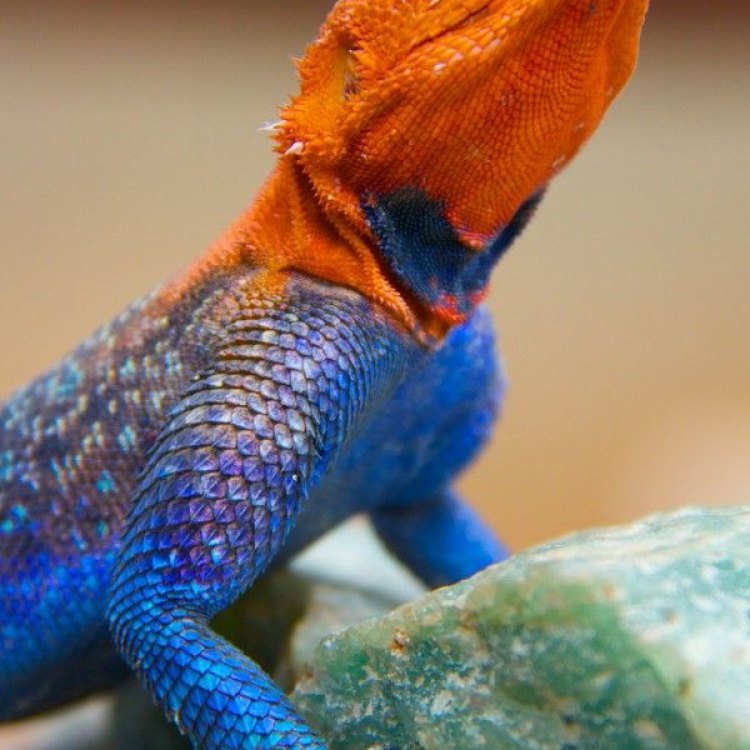
Agama Lizard
- Adult Size: Up to 30 centimeters (12 inches)
- Average Lifespan: 5 to 15 years
- Reproduction: Sexual
- Reproductive Behavior: Males display colorful head and body during breeding season to attract females
- Sound or Call: No distinct sounds or calls
- Migration Pattern: Non-migratory
- Social Groups: Solitary, but can be seen in groups
- Behavior: Diurnal, active during the day
- Threats: Habitat loss, predation
- Conservation Status: Least Concern
- Impact on Ecosystem: Agama lizards play a role in controlling insect populations.
- Human Use: Not typically used by humans
- Distinctive Features: Bright blue head and neck in males
- Interesting Facts: Male agama lizards can change their color depending on their mood or reproductive state.
- Predator: Birds of prey, snakes, larger lizards
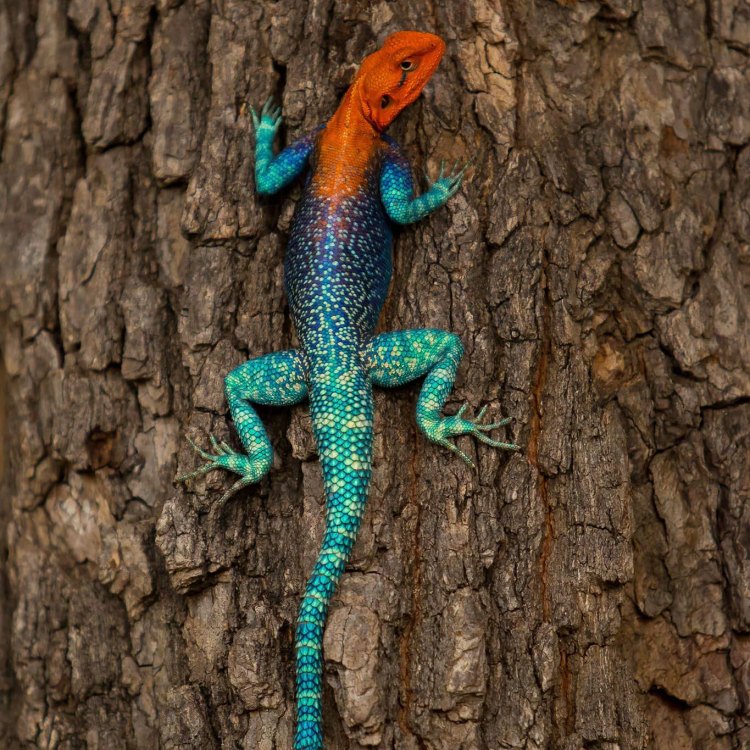
Agama agama
The Colorful and Fascinating World of Agama Lizards
Introduction:Nestled among the vast and diverse animal kingdom, the Agama lizard stands out with its stunning and vibrant appearance. From their striking blue head and neck to their intriguing behavior, these lizards never fail to capture our attention. In this article, we will dive into the captivating world of Agama lizards and learn about their unique features, reproductive habits, threats, and impact on the ecosystem.
Adult Size and Average Lifespan:
Agama lizards are moderate-sized reptiles, reaching up to 30 centimeters (12 inches) in length PeaceOfAnimals.Com. Although size can vary among individuals, females are generally smaller than males. These lizards have an average lifespan of 5 to 15 years, depending on their habitat and level of protection from predators.
Reproduction and Reproductive Behavior:
Agama lizards are sexual reproducers, meaning they require both male and female for reproduction. During the breeding season, which typically occurs in the spring and summer, male Agamas display their colorful head and body to attract females. With their bright blue coloration, these lizards put on quite a show, making them stand out among other species.
Sound or Call:
Unlike other reptiles, Agama lizards do not make any distinct sounds or calls. However, during mating, they may hiss or make a soft rattling sound as part of their courtship behavior.
Migration Pattern and Social Groups:
Agama lizards are considered non-migratory, meaning they do not travel long distances for food or mating. However, they do move within a specific territory to find better resources or for mating purposes Australian Gecko. These lizards are solitary creatures, but they can sometimes be found in groups, especially during the breeding season.
Behavior:
Agama lizards are diurnal creatures, which means they are active during the day and rest at night. They are excellent climbers and can often be found basking in the sun or using their tails to hang from branches. These lizards are also excellent sprinters, using their strong hind legs to escape predators quickly.
Threats and Conservation Status:
Habitat loss is one of the main threats to Agama lizards. With the constant destruction of their natural habitat for human development, these lizards are losing their homes and food sources. Another significant threat to Agamas is predation from birds of prey, snakes, and larger lizards.
However, despite these threats, Agama lizards are listed as "Least Concern" on the IUCN Red List of Threatened Species. This status is due to their widespread distribution and large population numbers in their native habitats.
Impact on Ecosystem:
Agama lizards play a crucial role in controlling insect populations in their habitats. They are opportunistic feeders, meaning they will eat whatever insects they can find, including flies, ants, crickets, and more. As natural predators, they help to keep insect populations in check, maintaining the balance in the ecosystem.
Human Use:
Agama lizards are not typically used by humans, although they are occasionally kept as pets. These lizards require specific care and diet, making them unsuitable for first-time reptile owners. In some cultures, however, Agamas are considered a delicacy and are hunted for their meat.
Distinctive Features:
The most distinctive feature of Agama lizards is their bright blue head and neck in males. This striking coloration is used to attract females and establish dominance among other males during the breeding season. However, male Agamas can also change their color depending on their mood or reproductive state, making them even more fascinating.
Interesting Facts:
Apart from their color-changing abilities, Agama lizards have some other interesting facts that set them apart from other reptiles.
• Agamas can detach their tails as a defense mechanism and regrow them later.
• These lizards have excellent eyesight, making it easier for them to spot prey or predators.
• Agamas have a fold of skin under their chin called a dewlap, which they use to communicate with other lizards and regulate their body temperature.
Predators:
Agama lizards have several predators in the wild, including birds of prey, snakes, and larger lizards. However, due to their color-changing abilities and quick movements, they can often evade these predators and escape to safety.
Conclusion:
In conclusion, the Agama lizard is a fascinating and unique creature that adds a splash of color to the reptile world. With their vibrant appearance and interesting behaviors, these lizards have captured the attention of scientists and researchers for centuries. However, with the increasing threats to their survival, it is essential to protect these creatures and their habitats to ensure their existence in the future. So, let's admire and appreciate the beauty of Agama lizards from a distance and do our part in preserving their natural habitats.
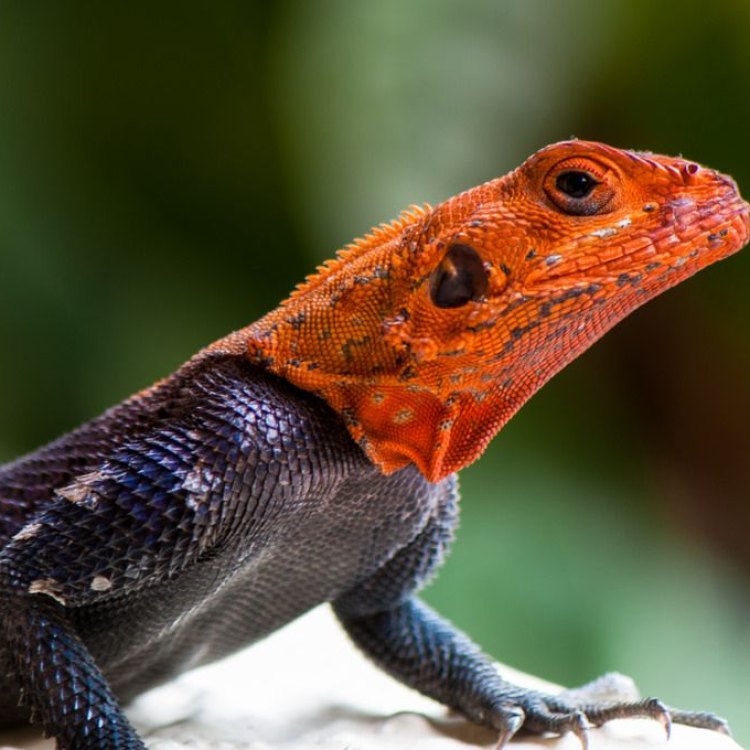
The Colorful and Fascinating Agama Lizard of Sub-Saharan Africa
Disclaimer: The content provided is for informational purposes only. We cannot guarantee the accuracy of the information on this page 100%. All information provided here may change without prior notice.

